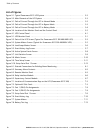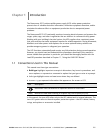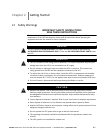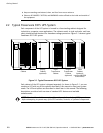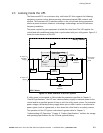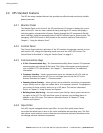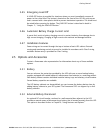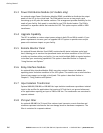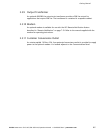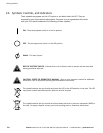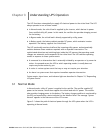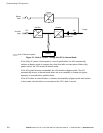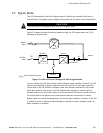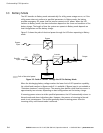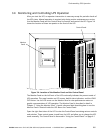Getting Started
2-6
EATON Powerware
®
9315 UPS (200–300 kVA) Operatio n Manual S 164201036 Rev F powerware.com
2.5.3 Power Distribution Module (LV models only)
An optional output Power Distribution Module (PDM) is available to distribute the output
power of the UPS to the critical load. The PDM cabinet has one or two panels, each
containing up to 42 poles for breaker switches. This arrangement provides flexibility for the
needs of your facility. Each panel is c ontrolled by one 225A feeder breaker. The PDM is
enclosed in a separate cabinet that matches the UPS. This option requires a 480 to 208V
transformer.
2.5.4 Upgrade Capability
The UPS is available in various output power ratings in both 50 and 60 Hz models. If your
power requirements increase, you can upgrade the UPS system to provide more output
power with minimum impact on your facility.
2.5.5 Remote Monitor Panel
An optional Remote Monitor Panel (RMP) contains backlit status indicators and a local
horn, allowing you to monitor the operational status and alarm condition of the UPS from
virtually any location within your facility. You can install multiple RMPs at remote locations
to increase your monitoring capabilities. This option is described further in Chapter 6,
“Using Features and Options.”
2.5.6 Relay Interface Module
An optional Relay Interface Module (RIM) uses relay contact closures to indicate the
operating status and alarm condition of the UPS system. The module uses a serial interface
line and may support up to eight critical loads. This option is described further in
Chapter 6, “Using Features and Options.”
2.5.7 Input Isolation Transformer
Optional 480/480, 208/480, or 600/480 Vac input isolation transformers provide an isolated
input to the rectifier for applications that require a DC link that is not ground referenced
or for applications requiring an input of 208 or 600 Vac. The transformers are contained in
separate cabinets.
2.5.8 5% Input Filter
An optional 480/480 Vac 5% input filter reduces input harmonic current distortion and
minimizes upstream interference that can damage sensitive hardware components. The
filter is contained in a separate cabinet.



